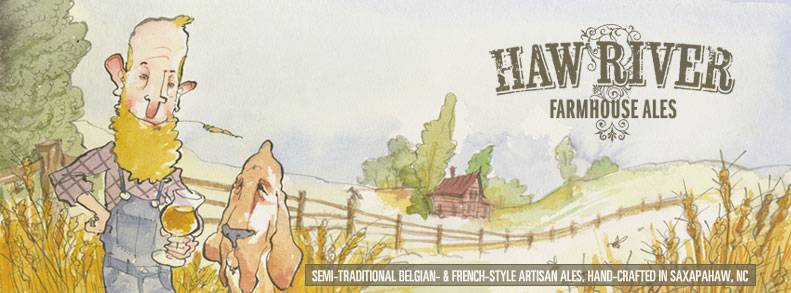 |
| A little birds-eye perspective on where we placed each of our collectors. |
Our experiment began a few weeks ago by creating 3000mL of "starter wort" using carbon-filtered water and several ounces of light DME (that's basically a sugar water made from dried malt powder and a little yeast nutrient thrown in for good measure). We acquired a few small Pyrex containers and removed the center of the plastic lid with a utility knife, so we could "seal" the container but leave a nice big hole in the top to let the bugs in. We then sanitized the containers along with some cheesecloth and assembled each of our "yeast traps" by adding the wort, placing the cheesecloth across the top, then sealing the whole thing with the lid, leaving a nice, big, open hole in each for the yeast (and other things) to come on through. With the containers filled and prepared, we ventured out to a few spots in Saxapahaw to see what we could harvest.
 |
| The fig tree atop the hill where Saturdays in Saxapahaw is held each summer. |
 |
| The fireplace just off the Haw River, south of the Rivermill apartments. |
 |
| On the stone wall that surrounds the patio upstairs at the Rivermill. |
And Sample D we decided to actually leave inside our apartment, on the windowsill, just to find out if the "funk" might differ between inside and outside. Didn't have much hope for this one, but when we collected it after a few days, we were pleasantly surprised with a tart, floral, bready aroma.
After a few days of leaving our containers out in the cool, dry weather, we collected our samples, brought them inside, then transferred each of them into their own sanitized glass container (removing any mold that had gained purchase on the surface so as to try to cut down on too many off flavors or harmful bacteria from the start). Each container was covered with sanitized aluminum foil, so there'd be a bit of oxygen transfer to allow any yeast to grow a bit longer, then left alone to settle out.
After a few more days at room temperature, we made another "starter batch" of our DME-wort (twice as much this time), then pitched each wild yeast starter into sanitized half-gallon growlers with air-locks, like you see in the photo below.
 |
| Our wild yeast samples, safe and sound back at the homestead. |
Keep an eye on our Facebook page and this blog for a follow-up post over the next few weeks, spotlighting what we discover when we get these beasties grown up a bit more and under a microscope! Assuming we can get viable yeast from one (or all!) of our samples, we're planning to brew something rather special to be placed in a very cool 10g cask we picked up from one of our favorite beer bars in Raleigh a few weeks ago. Stay tuned, wild beer fans!
Postscript: In case you're wondering, the little note on each container says "Please don't drink me, disturb me or throw me away. I'm a yeast experiment left by someone who lives in the Rivermill Apartments. Thanks!"

No comments:
Post a Comment